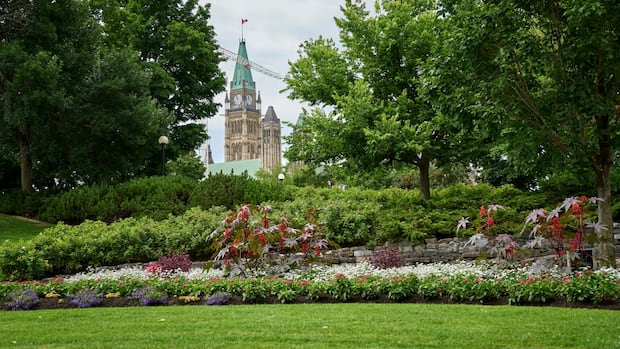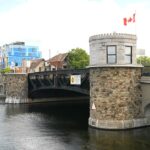OttawaPeople age 50 and older who lived near green spaces were less likely to develop depression during the first six months of the COVID-19 pandemic, according to a new national study.Findings should inform urban design choices, Ottawa researcher saysGabrielle Huston · CBC News · Posted: Aug 31, 2025 4:00 AM EDT | Last Updated: 6 hours agoThe research showed people who lived near green space were less likely to develop depression in the early months of the COVID-19 pandemic. (David Richard/CBC)People age 50 and older who lived near green spaces were less likely to develop depression during the first six months of the COVID-19 pandemic, according to a new national study.The study was led by Paul Villeneuve, an epidemiologist at Carleton University, in partnership with researchers at the University of Toronto, Queen’s University and the Public Health Agency of Canada. “We were surprised by it when we undertook the study,” Villeneuve told CBC Radio’s All In A Day. Previous research had shown that access to green space can improve mental health, but “we found the effects [during the pandemic] were profound.”The researchers used data from surveys conducted by the Canadian Longitudinal Study on Aging — one conducted shortly before the pandemic, and one conducted six months in.That data was compared to a map of green space based on satellite imaging, and each subject was ranked on a scale from zero to one — zero meaning the subject had no green space nearby, and one indicating the subject was surrounded by vegetation. During the first six months of the pandemic, the depression rate among their 13,000 subjects doubled, Villeneuve said. But people who lived in the greenest neighbourhoods were 20 per cent less likely to develop depression.Paul Villeneuve is an epidemiologist at Carleton University in Ottawa. He collaborated with other Ontario researchers on this national study. (Submitted)’Known for a long time’Margaret Tansey, a retired nurse and chair of the Seniors Health Innovation Hub in Ottawa, said like Villeneuve, she’s read other research showing the health benefits of green space.”Florence Nightingale [was] a nurse leader back in the 1800s … and she talked about the need for people who are in recovery to actually have sunshine and clean air and be involved in nature,” Tansey said.”So this has been known for a long time, the beneficial effects of nature on … both mental and physical health.”A park, sports field or forest would all count toward each participant’s ranking to determine how green their neighbourhood was. (Ben Andrews/CBC)There are a lot of reasons for that, Villeneuve explained. Nearby green space buffers city noise, reduces local air pollution and gives nearby residents somewhere to exercise or chat.”[Studies] have shown that just looking at green space [has] positive health benefits,” he said.Villeneuve’s study found nearby green space benefited two groups in particular: people with low socioeconomic status and those with mobility issues.For Tansey, that was no surprise.”If you can’t get out easily and you’re isolated … I’m sure it has an effect on your sense of well-being and your mood,” she said. “I think that people with more income have more options.”Though his research surveyed people age 50 and older, Villeneuve said he thought the conclusions would hold true for younger people, too.Healthier citiesDuring the pandemic in Ottawa, the local advocacy group Greenspace Alliance of Canada’s Capital worked to get people outside and into nature amid the lockdowns. One project was a partnership with the group Kichi Sibi Trails to re-establish the Portage Trail. “Definitely, health benefits are fundamental [and] one of the reasons why we advocate for the preservation and protection of green space,” said Paul Johanis, the organization’s chair.Ottawa is overall a very green city, Johanis said, but the biggest threat to green space is development, which is “a never-ending situation.”Paul Johanis, chair of the Greenspace Alliance of Canada’s Capital, said one way the City of Ottawa could improve greenery in the city would be to set a goal for the number of trees each neighbourhood should have. (Francis Ferland/CBC)”Learning how to manage development and green space protection, that’s the real challenge,” he said.Villeneuve said his study adds to an existing body of research that can inform how healthier cities are designed.”As these studies come out, the evidence accumulates for the need to design these green spaces and make them accessible,” he said. “We’re lucky in Ottawa. We can go over to the Gatineau Park and we have the fall colours and we have the canal. There’s a lot of opportunities for green space in this city, and it highlights why some of these areas maybe should be protected.”Research finds people 50 and older were less prone to depression during pandemic if they lived near green spaceThe study was published last week and led by Paul Villeneuve, an epidemiologist at Carleton University. He tells us more about what the study found. ABOUT THE AUTHORGabrielle is an Ottawa-based journalist with eclectic interests. She’s spoken to video game developers, city councillors, neuroscientists and small business owners alike. Reach out to her for any reason at gabrielle.huston@cbc.ca.Follow Gabrielle on BlueskyFollow Gabrielle on Instagram
Monday, 22 Dec 2025
Canada – The Illusion
Search
Have an existing account?
Sign In
© 2022 Foxiz News Network. Ruby Design Company. All Rights Reserved.
You May also Like
- More News:
- history
- Standing Bear Network
- John Gonzalez
- ᐊᔭᐦᑊ ayahp — It happened
- Creation
- Beneath the Water
- Olympic gold medal
- Jim Thorpe
- type O blood
- the bringer of life
- Raven
- Wás’agi
- NoiseCat
- 'Sugarcane'
- The rivers still sing
- ᑲᓂᐸᐏᐟ ᒪᐢᑿ
- ᐅᑳᐤ okâw — We remember
- ᐊᓂᓈᐯᐃᐧᐣ aninâpêwin — Truth
- This is what it means to be human.
- Nokoma











